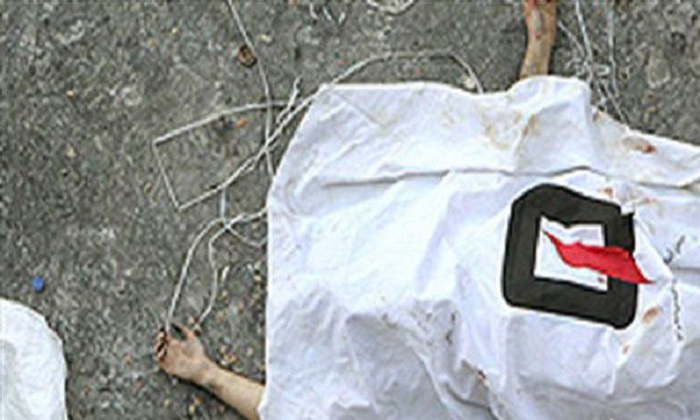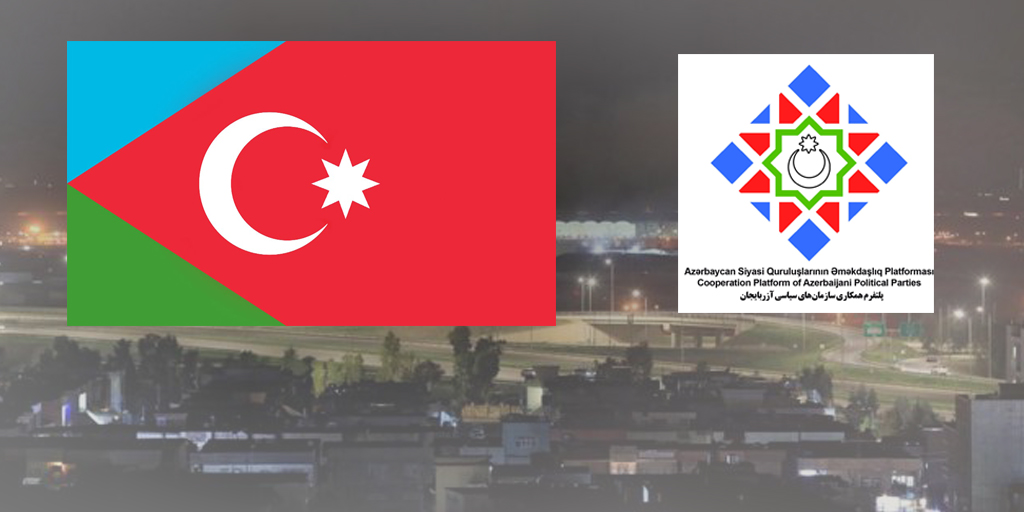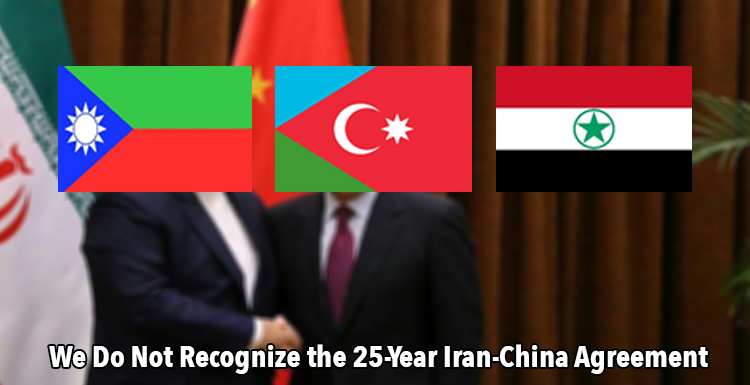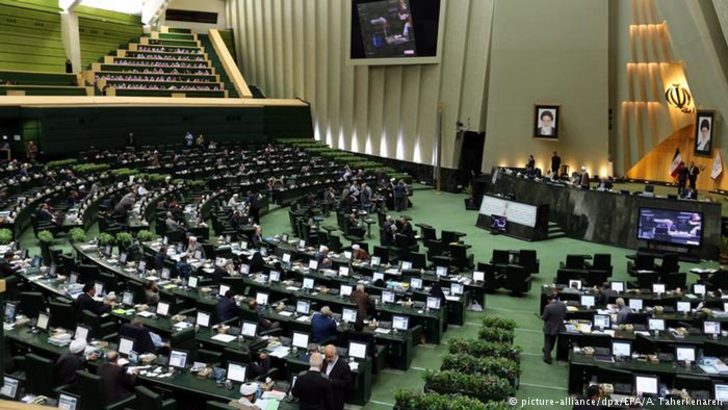Water crisis in Iran: Causes, consequences and perspectives

If the 20th century can be called “the Age of Oil” the 21st century can become “the Age of Water”.
As the population grows and agricultural development expands, water consumption also increases. And while certain countries suffer from floods, a number of countries, in particular, in the Middle East region, suffer from the water shortage.
Drought and water shortage in the Middle East countries can lead to economic and consequently political instability. In this regard, the most vulnerable country is Iran. Unlike the Gulf countries, Iran couldn’t develop an effective system of water supply and use.
Even though the Iranian regime is trying to convince its people and the whole world that the US and Israel “want to destroy Iran”, in fact, drought poses a bigger threat for the future of Iran than US and Israel taken together.
According to the recent joint research of Iranian and American scientists, drought and water shortage in ancient times were causes of the collapse of ancient Empires in this region.
Right now the situation is quite different. Firstly, the population has grown; secondly, agriculture needs an enormous quantity of water. That means that processes, which could take ages in ancient times, can fit in 40-50 years nowadays. Iran has been suffering from drought for quite a long time; rivers and lakes in the country dry up and groundwater become depleted.
There are two main causes of this process. The first one is the decrease in precipitation in Iran. According to estimates, the rate of precipitation has reached its lowest point in more than 40 years. Precipitation decrease had a negative impact on the groundwater, lakes and rivers level.
It is wrong to say that the Iranian authorities don’t take any measures to fight the crisis, however, mostly the measures taken by them are either belated or half-hearted
Ali Hajizade
Evaporation rate
In addition, evaporation rate also has a negative impact on the water reserves of Iran. The evaporation rate in the country is above the global norm – an estimated two-thirds of rainfall evaporates before it can replenish rivers – and domestic use of water is 70 percent higher than the global average.
Another cause is the human factor, namely, disproportionate, unplanned and illiterate use of water in agriculture. After the revolution in 1979, many educated people, professionals in various industries, including those few specialists in land reclamation who lived in Iran, left the country.
Agriculture, water management, and planning have been under the supervision of incompetent and corrupted persons, whose decisions were taken on the basis of political, not economic incentives.
Taking into account the growing population, low-income level, and international sanctions, Iranian government sought to the total self-reliance of the food supply. They needed much cheap and available food as soon as possible. That’s why the Government started to build a large number of dams on rivers.
They needed these dams to irrigate fields, but on the other hand, the dams were violating the ecosystem, which was developed for ages. Furthermore, artesian wells were randomly dug and groundwater was pumped out in large amounts.
Iranian farmers were receiving concessional loans and grants from the Government. It had a positive impact on the Iranian economy, but only for a short period. Rural population had the opportunity to earn and city-folk could buy relatively cheap food.
However, that couldn’t last forever, uncontrolled consumption of water and increased planting of crops, requiring more irrigation water together with the drought in Iran, led the country to the verge of environmental and economic catastrophe.
Consequences of the water crisis can be witnessed in various parts of the country. For example, as a result of total desiccation of Lake Hamun, near the Afghan border, the population of 124 surrounding villages were forced to leave this area. This happened in 2001, the situation in Iran has only worsened since that time.
Another major environmental disaster is taking place in the North-West of Iran in Southern Azerbaijan. The desiccation of the largest salt lake in the Middle East has already caused environmental and economic catastrophe, merging into the political arena.
Although the lake began to dry up in the middle of 1990s, the central government didn’t take serious measures to save it. The main cause of the desiccation is dams on the rivers, which once were feeding the lake.
According to local activists, water passes mainly to large farms, whose owners are people close to the regime. Such attitude led to conspiracy theories that the central government drains the lake intentionally to force people to migrate to the interior of Iran, where they can be easily assimilated and will stay far from separatist objectives.
The authorities’ inaction and their appeals to resettle Azerbaijanis to other parts of Iran create the conditions for such theories. Moreover, the authorities are hunting Azerbaijani environmental activists, who protest the inaction of the authorities. Areas around the lake are suffering from sandstorms.
In 2016, a famous actor Leonardo Di Caprio posted a picture of drying Urmia Lake in his Instagram to draw the attention of the world to this environmental catastrophe. However, the Lake has dried up even more since that time.
Harmful effects of the water crisis in Iran are also witnessed in the south-west of the country in the Ahwaz region. This area is settled by Arabs and gives a lion’s share of the Iranian oil. Despite that fact, the population of the region is faring poorly.
The Ahwaz region was badly affected during the Iran-Iraq war. Not recovered from the previous war, the region faced a new serious water crisis. Millions of palm trees, traditionally cultivated in this region, have faced a threat of total elimination, due to lack of irrigation water.
Citizens of the Ahwaz region also suffer from severe salt and sandstorms, caused by the water crisis. It is noteworthy that Ahwazis suffer not only from the drought and poverty; they also face serious consequences of the industrial pollution of agricultural fields and orchards.
According to the scientific report prepared by young Iranian specialists in 2017, only a small part of Iranian land is suitable for intensive agricultural activities. Here is how the land’s suitability is classified according to the report:
Iran’s land suitability for cropping as (million ha): very good 0.4 percent (0.6), good 2.2 percent (3.6), medium 7.9 percent (12.8), poor 11.4 percent (18.5), very poor 6.3 percent (10.2), unsuitable 60.0 percent (97.4), and excluded areas 11.9 percent (19.3). However, it is worth knowing that amount of lands, suitable for agriculture will decrease every year, as a result of the drought.
According to a report prepared by the Trade Council of Ministry of Foreign Affairs of Denmark (The agriculture and food market in Iran – Opportunities and challenges for Danish companies, March 2017) in March 2017 – despite all efforts at nutritional self-sufficiency, Iran is still dependent upon the import of food. It is about significant import from India.
In addition, there is a significant import of red meat, butter, fish, fruit, and wheat, and self-sufficiency regarding these products is not expected to be realized in any near future. It should also be noted that approximately 70 percent of the raw materials for animal fodder is imported from abroad. Of course, the import dependence, that eventually affects the cost of food.
Rural-urban migration
The water crisis spurs rural-urban migration. Many villagers swell the masses of the urban poor. In most cases, this is poorly educated and unskilled workers, who can hardly find a job in already suffering from unemployment in Iranian cities. Such migration increases the risk of social upheaval.
Expressions of social discontent caused by the water crisis are already seen. Isfahan is a province that has faced the lack of water and protests are taking place in the province. One of the biggest cities of Iran – Isfahan, once famous for its rivers and gardens is now suffering from the water crisis.
Certain experts think (it is hard to disagree with them) that “climate refugees” were the driving force during the mass protests in Iran 2017-2018. It is wrong to say that the Iranian authorities don’t take any measures to fight the crisis, however, mostly the measures taken by them are either belated or half-hearted.
Iranian officials often complain about the lack of finances, due to international economic sanctions, however, it is hard to believe in it because, despite the sanctions, the Iranian authorities are able to find funds to finance pro-Iranian proxies all over the region, the war in Syria and lobbying activity in the West.
In addition to the internal instability, the water crisis also puts a strain on relations with neighboring countries, in particular with Turkey and Afghanistan. The Iranian Government is not happy with Turkey’s and Afghanistan’s plans to build dams on their territory. Moreover, the Government of Afghanistan accuses IRGC of supporting Taliban, to sabotage the building of dams on Afghanistan’s territory.
Every year Iran is approaching the point of no return with regard to the water crisis. Today, the Iranian Government is not able to handle the consequences of the crisis; the pressure will only get higher. In the near future, this can lead to major social and political upheavals, then can totally change the current geopolitical landscape of Iran.
______________________________
Ali Hajizade is a political analyst and founder editor in chief of thegreatmiddleeast.com. He tweets @AHajizade.
Last Update: Tuesday, 3 July 2018 KSA 20:25 – GMT 17:25
Source: Alarabiye























